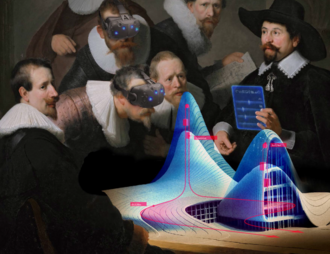
Design by Research - Center for Academic Exchange
Design Studio, Winter 2017/18
In this design studio we applied an evidence based design workflow for a human-centered design of a center for academic exchange.
Buildings are made for humans. So, the design of buildings requires architects to anticipate how humans will experience and behave in the planned environment. However, this is not an easy task, due to the vast amount of influencing factors on both sides - the physical environment (such as geometry, light, color) - and the human itself (different social backgrounds, expectations, age, etc.). This challenges the design of building and results in the fact that even architecturally remarkable buildings, are sometimes hard to understand for building users. We might ask, can’t science support designers here?
The role of science in design can be seen in identifying regularities in natural phenomena that can be used in the definition of building parameters. Whereas physical sciences found their way into the design of buildings (such as structural and thermal behaviour), sciences dealing with human behaviour and emotions (e.g. environmental psychology) are still lacking such an integration.
In this project we will try to bridge the gap between architectural design and environmental psychology. Therefore, we first will learn how to evaluate built environments in terms of human-centred aspects such as wayfinding, social interaction and spatial experience. Second we will develop a design strategy that anticipates the ‘human-perspective’ in the creation of spaces (that is: we will use research for design, so called “Evidence based design”). As a case we will use the design of a “Center for Academic Exchange”, a multi-functional building for lectures, seminars, conferences, living and working, requiring a careful consideration of different user groups (scientists, students, visitors ) and their interactions.
After your building designs are created, we will test them in a Virtual Reality simulation using Oculus Rift. Following a ‘peer evaluation’ (everyone is evaluating the designs of the others), by taking eye-level perspective of a potential building user, the critics and comments are used to revise the design.
The project is accompanied by two seminars: “Spatial Cognition for Architectural Design” and “Parametric Building Information Modeling”, which are mandatory for this project.
